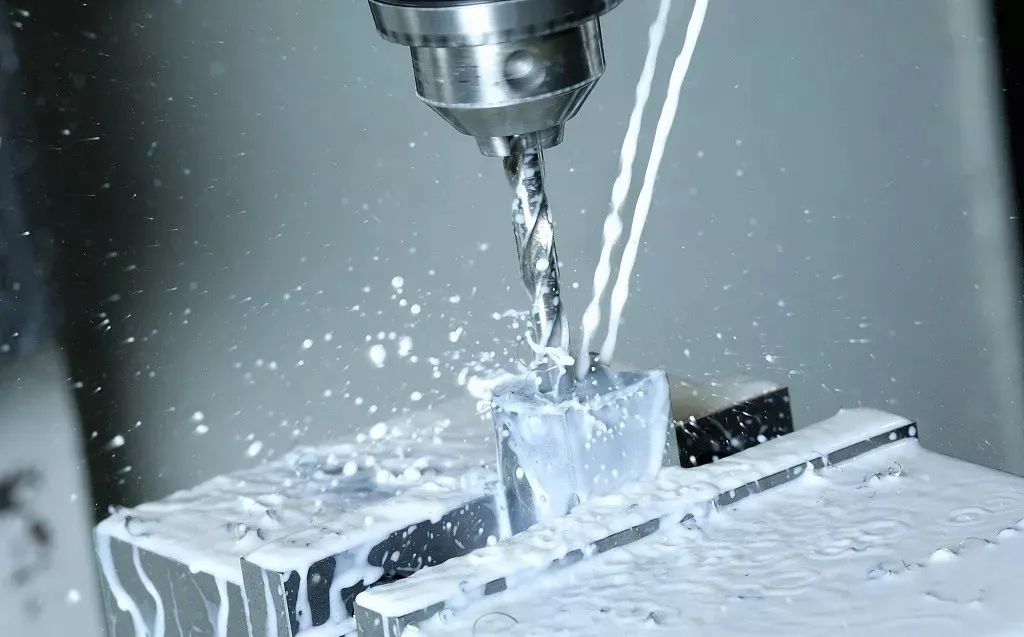
Privacy statement: Your privacy is very important to Us. Our company promises not to disclose your personal information to any external company with out your explicit permission.
![]() July 05, 2023
July 05, 2023
Triethanolamine itself is a water-soluble rust inhibitor. It can effectively prevent steel from rusting in the short term when used alone, with a general concentration of 0.5% to 2%. Triethanolamine has synergistic antirust effect with Phenethyl alcohol amine, Sodium benzoate, borax, sodium carbonate and other water-soluble antirust agents, and the antirust ability of water-based Cutting fluid can be significantly improved by combined use. But Triethanolamine is corrosive to copper, and the addition of 0.05% ~ 0.1% benzotriazole can improve the corrosion resistance of copper. Oleic acid Triethanolamine is also a kind of rust inhibitor, which is suitable for rust prevention of Ferrous and aluminum alloy.

2.3 Surfactants
Surfactant plays a role of penetration, diffusion, stability and cleaning in water-based Cutting fluid, and is an indispensable additive for the synthesis of Cutting fluid and emulsion. Triethanolamine and fatty acid can synthesize an anionic surfactant. Surfactants with different ratios and different Fatty acid synthesis have different HLB values, which can meet the needs of different water-based Cutting fluid. These surfactants have good emulsifying ability. If they are used together with non-ionic surfactant Alkylphenol polyoxyethylene ether or Fatty alcohol polyoxyethylene ether, the emulsifying effect will be better.
Triethanolamine itself is also a non-ionic surfactant. Adding it to water can significantly reduce the surface tension of water. Adding Triethanolamine to the water-based Cutting fluid will help the Cutting fluid soak and penetrate into the cutting (grinding) interface, thus giving full play to the cooling and cleaning role of water-based Cutting fluid.
2.4 Stabilizers
Oiliness agent and extreme pressure agent added in water-based Cutting fluid are easy to be separated from water, thus reducing the role of Cutting fluid. A small amount of Triethanolamine can play a stabilizing role. For example, Boronic acid ester is a new type of extreme pressure and anti-wear agent, which is formed by the reaction of hydroxyl bearing substances with boric acid or its compounds. The main disadvantage of borate ester is that it is easy to hydrolyze. Adding a small amount of Triethanolamine in the synthesis of borate ester can inhibit the hydrolysis.
3. Application of Triethanolamine Cutting fluid
The BN type water-based Cutting fluid is compounded with additives such as oily agent (Triethanolamine oleate), antiwear agent (boric acid ester containing sulfur), antirust complex (Triethanolamine, urea, borax, sodium carbonate, benzotriazole, etc.), and is qualified according to the GB6144-85 Standard for Synthesis of Cutting fluid (IV). Among them, the lubrication and rust prevention performance are superior to national standards. After long-term use in the factory, the Cutting fluid has excellent performance, can significantly improve cutting efficiency and processing quality, extend tool life, reduce processing costs, and is harmless to operators with long service life.
4. Precautions during use
(1) Triethanolamine easily reacts with Nitrous acid to produce substances harmful to human body. Therefore, Triethanolamine Cutting fluid should be careful to use Sodium nitrite as rust inhibitor.
(2) When Triethanolamine type Cutting fluid is used as grinding fluid, a slight unpleasant smell will be produced. In order to overcome this shortcoming, the addition amount of Triethanolamine can be reduced, and a small amount of edible essence can also be added.
(3) When grinding hard alloy tools, it is not easy to use cutting fluids containing triethanolamine. Because Triethanolamine aqueous solution will leach cobalt from cemented carbide tools, thus affecting the tool performance and service life.
The above is the The Importance of Triethanolamine in Water based Cutting fluid we have listed for you. You can submit the following form to obtain more industry information we provide for you.
You can visit our website or contact us, and we will provide the latest consultation and solutions
Send Inquiry
Most Popular
lastest New
Send Inquiry
Send Inquiry

Mr. James
Tel:0086-371-58651986
Fax:
Mobile Phone:+8613783582233
Email:sales@cn-lubricantadditive.com
Address:No.11 Changchun Road, High-Tech Zone, Zhengzhou, Henan
Related Products List
Mobile Site


Privacy statement: Your privacy is very important to Us. Our company promises not to disclose your personal information to any external company with out your explicit permission.

Fill in more information so that we can get in touch with you faster
Privacy statement: Your privacy is very important to Us. Our company promises not to disclose your personal information to any external company with out your explicit permission.